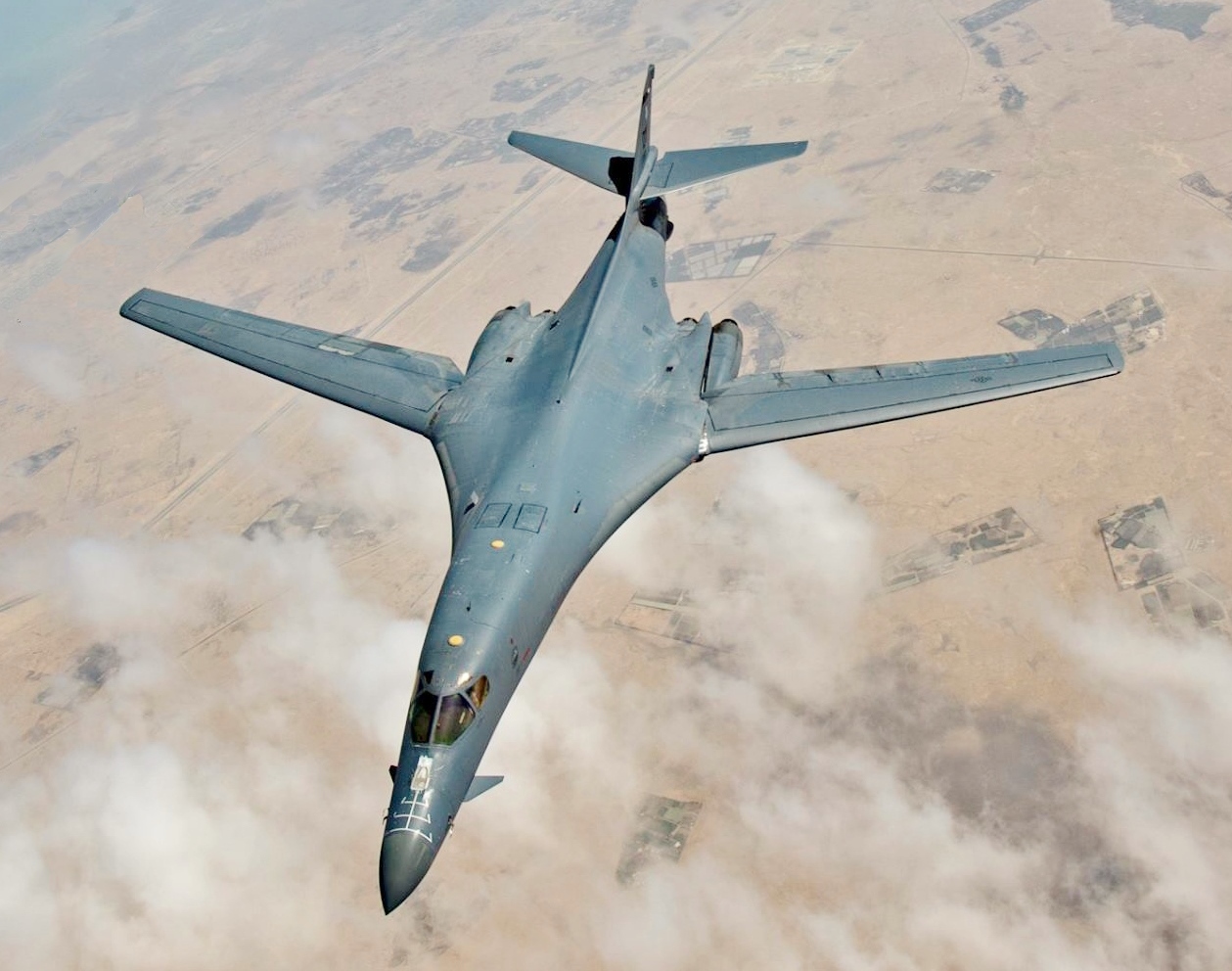
Strategic bomber
A strategic bomber is a medium- to long-range penetration bomber aircraft designed to drop large amounts of air-to-ground weaponry onto a distant target for the purposes of debilitating the enemy's capacity to wage war. Unlike tactical bombers, penetrators, fighter-bombers, and attack aircraft, which are used in air interdiction operations to attack enemy combatants and military equipment, strategic bombers are designed to fly into enemy territory to destroy strategic targets (e.g., infrastructure, logistics, military installations, factories, etc.). In addition to strategic bombing, strategic bombers can be used for tactical missions. There are currently only three countries that operate strategic bombers: the United States, Russia[1] and China.
The modern strategic bomber role appeared after strategic bombing was widely employed, and atomic bombs were first used in combat during World War II. Nuclear strike missions (i.e., delivering nuclear-armed missiles or bombs) can potentially be carried out by most modern fighter-bombers and strike fighters, even at intercontinental range, with the use of aerial refueling, so any nation possessing this combination of equipment and techniques theoretically has such capability. Primary delivery aircraft for a modern strategic bombing mission need not always necessarily be a heavy bomber type, and any modern aircraft capable of nuclear strikes at long range is equally able to carry out tactical missions with conventional weapons. An example is France's Mirage IV, a small strategic bomber replaced in service by the ASMP-equipped Mirage 2000N fighter-bomber and Rafale multirole fighter.
Notable strategic bombers[edit]
Nomenclature[edit]
Bombers listed below were used in the main or represented a shift in long-range bomber design (Maximum bomb load). In practice, bomb loads carried are dependent on factors such as the distance to target and the individual type, size or weight of bombs used.
Nomenclature for size classification of aircraft types used in strategic bombing varies, particularly since the time of World War II due to sequential technological advancements and changes in aerial warfare strategy and tactics. The B-29, for example was a benchmark aircraft of the heavy bomber type at end of World War II due to its size, range and load carrying ability; as the Cold War began, it became an intercontinental range strategic bomber with the development of new techniques, such as aerial refueling (which also greatly extended the range of other medium- to long-range bombers, fighter-bombers and attack aircraft).
During the 1950s the U.S. Strategic Air Command also briefly brought back the outdated term "medium bomber" to distinguish its Boeing B-47 Stratojets from somewhat larger contemporary Boeing B-52 Stratofortress "heavy bombers" in bombardment wings; older B-29 and B-50 heavy bombers were also redesignated as "medium" during this period.[2][3][4] SAC's nomenclature here was purely semantic and bureaucratic, however as both the B-47 and B-52 strategic bombers were much larger and had far greater performance and load-carrying ability than any of the World War II-era heavy or medium bombers.
Other aircraft such as the twin-jet US FB-111, Douglas A-3 Skywarrior and France's Dassault Mirage IV had nominal warloads of less than 20,000 lb (9,100 kg), and were significantly smaller in size and gross weight compared with their strategic bomber contemporaries, based on which they might be classified as medium bombers. In the nuclear strike role, France would replace its Mirage IVs beginning in the late 1980s with the even smaller, single-engine Mirage 2000N fighter-bomber, a further example of advancing technologies and changing tactics in military aviation and aircraft design. France's newer twin-engine Dassault Rafale multirole fighter also has nuclear strike capability.